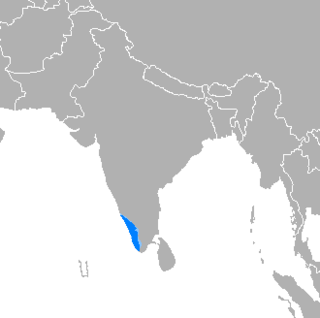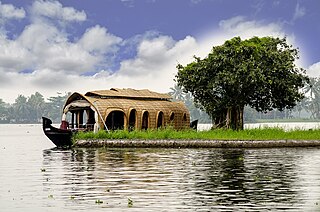
Malayalam is a Dravidian language spoken in the Indian state of Kerala and the union territories of Lakshadweep and Puducherry by the Malayali people. It is one of 22 scheduled languages of India. Malayalam was designated a "Classical Language of India" in 2013. Malayalam has official language status in Kerala and Puducherry (Mahé), and is also the primary spoken language of Lakshadweep and is spoken by 34 million people in India. Malayalam is also spoken by linguistic minorities in the neighbouring states; with a significant number of speakers in the Kodagu and Dakshina Kannada districts of Karnataka, and Kanyakumari and Nilgiris district of Tamil Nadu. It is also spoken by the Malayali Diaspora worldwide, especially in the Persian Gulf countries, due to the large populations of Malayali expatriates there. They are a significant population in each city in India including Mumbai, Bengaluru, Delhi, Kolkata, Pune etc.

Template:Short description tamil ethno-linguistic group
South Indian culture refers to the culture of the South Indian states of Tamil Nadu, Karnataka, Kerala, Andhra Pradesh, and Telangana. South Indian culture, though with its visible differences, forms an important part of the Indian culture. The South Indian Culture is essentially the celebration of the eternal universe through the celebration of the beauty of the body and femininity. It is exemplified through its dance, clothing, and sculptures.

Mahakavi Kumaran Asan was a poet of Malayalam literature, Indian social reformer and a philosopher. He is known to have initiated a revolution in Malayalam poetry during the first quarter of the 20th century, transforming it from the metaphysical to the lyrical and his poetry is characterised by its moral and spiritual content, poetic concentration and dramatic contextualisation. He is one of the triumvirate poets of Kerala and a disciple of Sree Narayana Guru. He was awarded the prefix "Mahakavi" in 1922 by the Madras university which means "great poet".
R. Jayaram Padikkal was an IPS officer. He had served as the Director General of Police (DGP), the highest rank in the force in the period 1993–94.

The Indian Institute of Astrophysics (IIA), with its headquarters in Bengaluru, is an autonomous research institute wholly funded by the Department of Science and Technology, Government of India. IIA conducts research primarily in the areas of astronomy, astrophysics and related fields.

A Divya Desam or Vaishnava Divya Desam is one of the 108 Vishnu and Lakshmi temples that is mentioned in the works of the Alvars, the poet-saints of the Sri Vaishnava tradition.

The North-Western Provinces was an administrative region in British India. The North-Western Provinces were established in 1836, through merging the administrative divisions of the Ceded and Conquered Provinces. In 1858, the Nawab-ruled kingdom of Oudh was annexed and merged with the North-Western Provinces to form the renamed North-Western Provinces and Oudh. In 1902, this province was reorganized to form the United Provinces of Agra and Oudh. Allahabad served as its capital from 1858, when it also became the capital of India for a day.

The culture of Kerala has developed over the past millennia, influences from other parts of India and abroad. It is defined by its antiquity and the organic continuity sustained by the Malayali people. Modern Kerala society took shape owing to migrations from different parts of India and abroad throughout Classical Antiquity.

Kerala is a state on the Malabar Coast of India. It was formed on 1 November 1956, following the passage of the States Reorganisation Act, by combining Malayalam-speaking regions of the erstwhile regions of Cochin, Malabar, South Canara, and Travancore. Spread over 38,863 km2 (15,005 sq mi), Kerala is the 21st largest Indian state by area. It is bordered by Karnataka to the north and northeast, Tamil Nadu to the east and south, and the Lakshadweep Sea to the west. With 33 million inhabitants as per the 2011 census, Kerala is the 13th-largest Indian state by population. It is divided into 14 districts with the capital being Thiruvananthapuram. Malayalam is the most widely spoken language and is also the official language of the state.

Mushika dynasty, also spelled Mushaka, was a minor dynastic power that held sway over the region in and around Mount Ezhi (Ezhimala) in present-day North Malabar, Kerala, India. The country of the Mushikas, ruled by an ancient lineage of the Hehaya clan of the same name, appears in early historic (pre-Pallava) south India and it is believed that Mushika dynasty has their descents from Heheya Kingdom. Early Tamil poems contain several references to the exploits of Nannan of Ezhimalai. Nannan was known as a great enemy of the pre-Pallava Chera chieftains. The clan also had matrimonial alliances with the Chera, Pandya and Chola chieftains. The Kolathunadu (Kannur) Kingdom, which was the descendant of Mushika dynasty, at the peak of its power, reportedly extended from Netravati River (Mangalore) in the north to Korapuzha (Kozhikode) in the south with Arabian Sea on the west and Kodagu hills on the eastern boundary, also including the isolated islands of Lakshadweep in the Arabian Sea.

Dr. K. Ayyappa Paniker, sometimes spelt "Ayyappa Panicker", was a Malayalam poet, literary critic, and an academic and a scholar in modern and post-modern literary theories as well as ancient Indian aesthetics and literary traditions. He was one of the pioneers of modernism in Malayalam poetry, where his seminal works like Kurukshethram (1960), is considered a turning point in Malayalam poetry. Many of Ayyappa Paniker's poems and his several essays were an important influence on later generations of Malayalam writers.

Ulloor S. Parameswara Iyer, born Sambasivan but popularly known as Ulloor, was an Indian poet of Malayalam literature and a historian. He was one of the modern triumvirate poets of Kerala in the first half of the 20th century, along with Kumaran Asan and Vallathol Narayana Menon. Umakeralam, a mahakavya, and Kerala Sahitya Charitram, a comprehensive history of the Malayalam language are two of his most important works.

Vaikom Satyagraha, from 30 March 1924 to 23 November 1925, was a nonviolent agitation for access to the prohibited public environs of the Vaikom Temple in the Kingdom of Travancore. Kingdom of Travancore was known for its rigid and oppressive caste system and hence Swami Vivekananda called Travancore a "lunatic asylum". The campaign, led by Congress leaders T. K. Madhavan, K. Kelappan K. P. Kesava Menon,George Joseph,E. V. Ramasamy "Periyar" and was noted for the active support and participation offered by different communities and a variety of activists.
Yashodhar Mathpal is an Indian archaeologist, painter, curator, Gandhian and Rock art conservationist. He is most known for his study of cave art, especially in Bhimbetka rock shelters, Barechhina (Uttarakhand) and Kerala. He founded the Folk Culture Museum in Bhimtal, Nainital district, in 1983.

The history of Uttar Pradesh the Northern Indian state, stretches back technically to its formation on 1 April 1937 as the North-Western Provinces of Agra and Awadh, but the region itself shows the presence of human habitation dating back to between 85,000 and 73,000 years ago. The region seems to have been domesticated as early as 6,000 BC.
This is a list of notable recorded floods that have occurred in India. Floods are the most common natural disaster in India. The heaviest southwest, the Brahmaputra, and other rivers to distend their banks, often flooding surrounding areas.

Tikla, or Tikula, is an archeological site and ancient rock shelter in Madhya Pradesh, India, known for its petroglyphs. Tikla is situated around 170 km (110 mi) south of Mathura and 50 km (31 mi) southwest of Gwalior on the Agra to Mumbai road near the town of Mohana on the right bank of the Parvati river.

Dr. Ayyathan Janaki Ammal (1881–1945) was the first female doctor in Kerala and also in Malabar region which was an administrative district of Madras Presidency during British rule in India. She was also the first female doctor from the Thiyya community and also hailed with the title as the first Malayali lady doctor and surgeon. and the sister to Ayyathan Gopalan. a social reformer of Kerala, the founder of the Sugunavardhini movement (1900), Depressed Classes Mission (1909) and the leader and propagandist of Brahmo Samaj in Kerala.

The Capture of Agra Fort ended a month-long siege by Suraj Mal on 12 June 1761. After a one month siege of Agra the Mughal army, led by Mirza Fazilka Khan, surrendered to the Jat army. The Jat possessed himself of all the wealth of the Mughal Empire and thus became one of the richest man on the planet. The Jats seized the old capital of Mughal Empire. It remained in possession of Bharatpur State rulers until 1774.

















